He stretched his massive neck, closed his eyes, and rubbed his forehead, eyes, and antlers back and forth across the spruce’s overhanging branch tips. Periodically, he would stop, open his eyes, and sniff his handiwork. He chewed the tip of one of the branches, sniffed it, and then rubbed the length of the branch across the top of his head again – pressing the limb against the base of his antlers. The long hair on his forehead covers an underlying network of secretory glands that are most active during the rut and in dominant, mature males. At one point, the buck seemed to deliberately push the twig tip into a nostril. Next, he more assertively rubbed his face and antlers all over the limb, this time rearing up onto his hind legs in order to reach higher into the spruce’s twigs and needles. More than 50 percent of his time was spent in dreamy-eyed preoccupation with the scents and secretions he had deposited just seconds before.
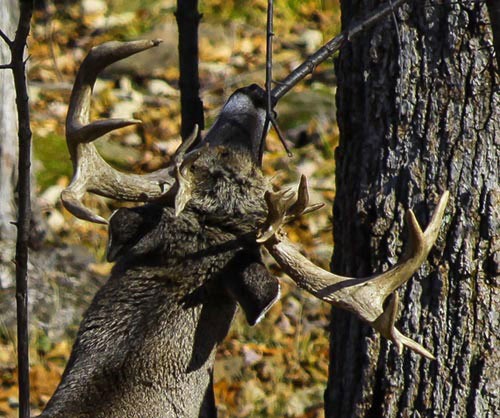
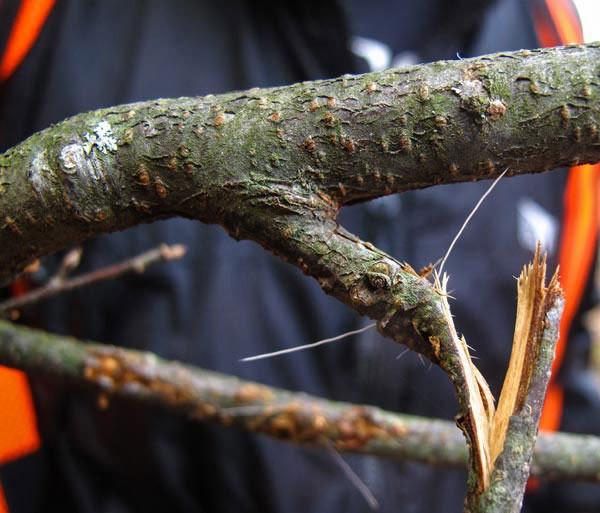
Hidden in a nearby ground blind, I watched in fascination. It was mid-October, just weeks before the breeding season would peak. Thick vegetation prevented me from seeing what happened next, but his tracks and sign told all. The buck had pawed the ground directly beneath the limb and had removed leaves and duff, exposing the ground to bare soil. Next, he stepped into his 3½- to 4½-foot oval-shaped scrape and performed “rub urination.” He squeezed his hind leg hock joints together and rubbed the pronounced hair tufts of his tarsal glands against one another while urinating upon them. So far as we know, the tarsal gland is a kind of chemical command central – simultaneously revealing a deer’s personal ID, physical condition, and social and sexual status. The three step scent-marking behavior – overhead limb-marking, pawing the scrape area, and rub urination – creates what biologists call a “full sequence scrape.”
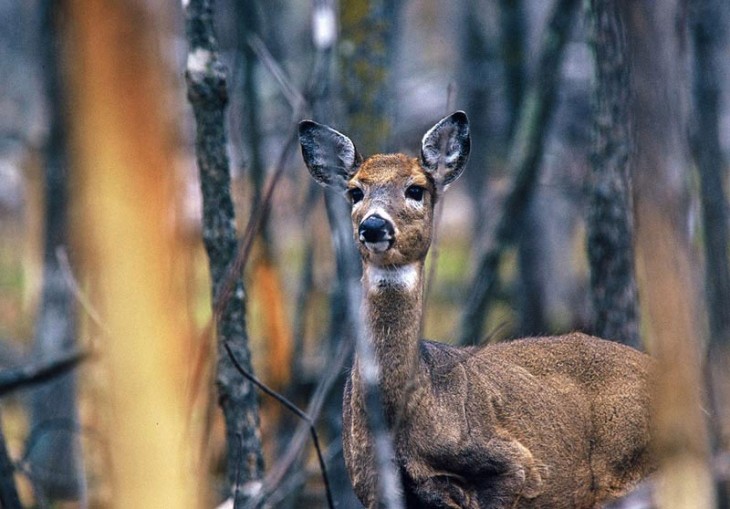
The buck’s urine transmitted to the scrape beneath him a potent elixir of specific compounds. Big Guy has the right stuff! The smells impart olfactory news about the buck’s physical condition – even the quality or shortcomings of his diet. The full sequence scrape also serves as a repository for his unique scent identity. He is indeed a mature dominant buck – one that his fraternal cohorts and prospective breeding partners know well.
But that’s not all. The mere process of pawing with his hooves leaves still more information. Interdigital glands between the primary toes of each foot leave signals that reveal the surging testosterone levels of Big Guy. Chemical ecologists have analyzed interdigital gland volatiles with gas chromatography-mass spectrometry and discovered 46 compounds that are found in higher concentrations in dominant males, including akanes, arcenes, aldehydes, keptones, aliphatic acids, esters, pyrroles, furans, and sulphur compounds.
Many whitetail deer enthusiasts, myself included, were taught that a scrape was a place where a buck prepared a kind of scrape-date liaison center, where he would leave a message and return later to find an answer from a potential mate. If her urine left in or near the scrape affirmed her sexual readiness, then he would simply trail her and find her. However, to conclude that the scrape merely functions as a buck-finds-doe nightspot grossly oversimplifies a scrape’s function. Simply put, a scrape serves as a multi-purpose communications system, through which many messages may be delivered that can influence the behavior of many deer, bucks and does alike. Different messages are posted and interpreted by different deer, with different results over time and space. To be sure, bucks do sometimes trail does away from scrapes, but most scrape making occurs before the does are sexually receptive. In fact, biologists now suspect that the mature does’ so-called “silent ovulation,” with elevated pre-estrus progesterone levels, is what stimulates bucks and triggers their inclination to make scrapes roughly 10 to 20 days before the actual breeding season begins. The olfactory allure of a doe’s approaching estrus biostimulates a buck and encourages his libido, aggressiveness, and determination to maintain his dominant rank in the deer social hierarchy.
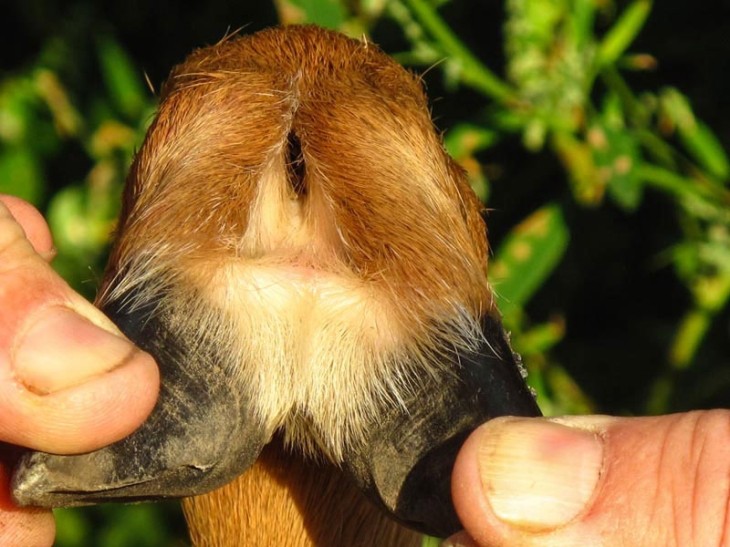
Social order in the whitetail world is made and maintained by challenge and dominance. From early on, fawns seek to be dominant. They rise on hind legs and kick and flail at one another with sharp hooves. Matriarchal does assert their authority over subordinate herd members, with good reason. With uncanny savvy, a wise doe’s leadership assures the herd foraging success, comfort, and safety. Although dominant bucks will inevitably be challenged by other bucks, their size, maturity, and “boss attitude” reward them with breeding and territorial privileges.
What does all this have to do with the scrape? Remember, a full sequence scrape not only biostimulates does and synchronizes the breeding season, but the scrape also posts multiple messages regarding the mature buck that created the signpost. When Big Guy initiates a scrape, he first focuses his attention on the overhead limb. Subsequent buck and doe visitors to his scrape do likewise. A doe will sniff and lick the branches that Big Guy has scented. In addition, she will discover more information in his urine and tarsal and interdigital gland chemicals, and will thereby become intrigued by our buck’s special qualities. Subordinate bucks will do the same – with a very different outcome. These younger bucks are intimidated by a mature buck’s various scent messages, and their competitive and reproductive urges are subdued. Here again, whitetail social order and herd well-being are served. The suppression of younger bucks’ participation in the rut reduces costly energy expenditures and risks associated with debilitating injuries, as well as increased vulnerability to predators. With winter’s severe climate and food shortages just a month away, this leaves more energy to be invested in growth and survival. In this way, young bucks do a better job of growing into the mature, dominant bucks of the future.
Note: Many fine biologists and chemical ecologists have certainly helped us appreciate the remarkable functions and versatility of the whitetail scrape. For those wishing to get their nose into this subject, consult the following: David Hirth, Larry Marchinton, Karl Miller, Karen Alexy, John Ozoga, Jonathan Gassett, Glenn DelGiudice, Gerald Moore, Terry Kile, Thomas Atkeson, Timothy Sawyer, and Leonard Lee Rue III.


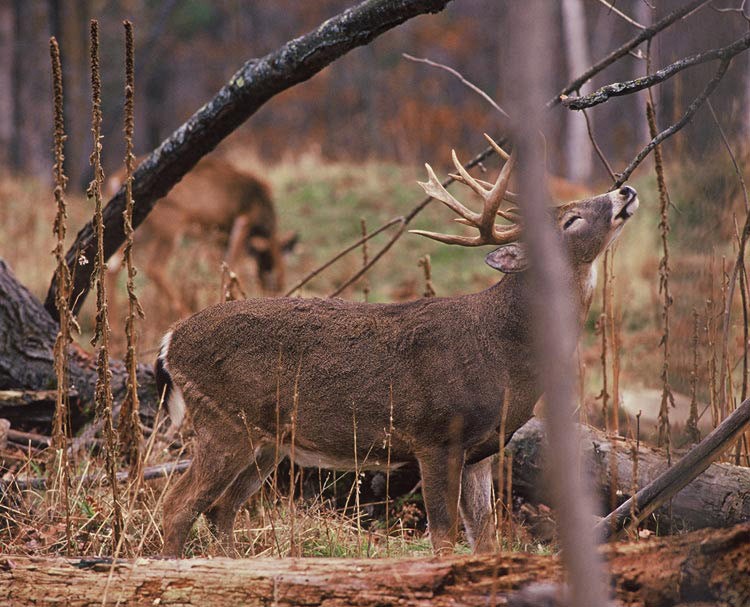
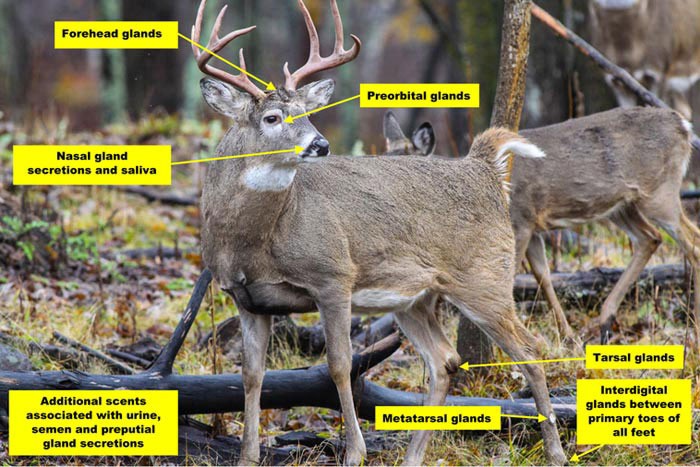
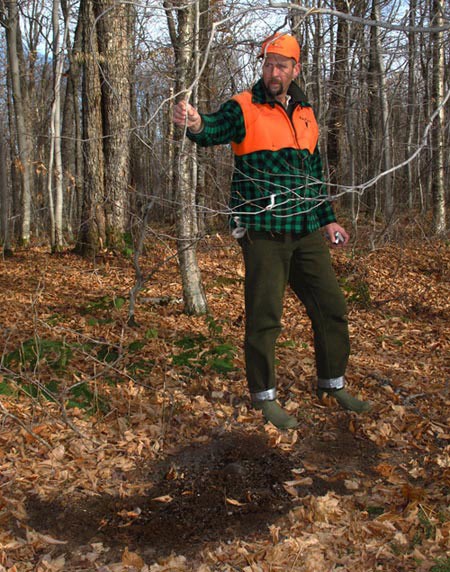
Discussion *